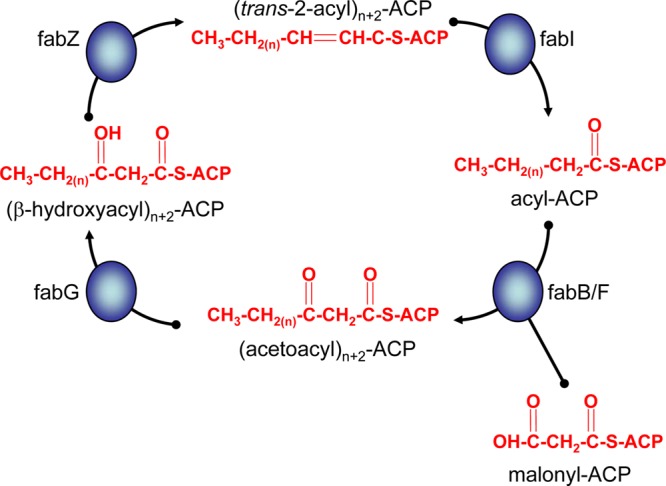FIG 1.

Fatty acid elongation in the Plasmodium apicoplast. Initiation of fatty acid synthesis leads to the formation of the four-carbon butyryl-acyl carrier protein (ACP). The chain length of this acyl-ACP is extended by a further two carbons through the condensation of the acyl-ACP with malonyl-ACP. The reaction is catalyzed by β-ketoacyl-ACP synthase II (fabB/F) and leads to the formation of acetoacyl-ACP (n + 2 denotes the addition of a further two carbons to the chain length of the elongating fatty acid). Acetoacyl-ACP is reduced to β-hydroxyacyl-ACP by β-ketoacyl-ACP reductase (fabG), dehydrated to trans-2-acyl-ACP by the action of β-hydroxyacyl-ACP dehydratase (fabZ), and finally reduced to acyl-ACP by enoyl-ACP reductase (fabI). Successive cycles of this elongation process lead to the formation of C14-ACP.
